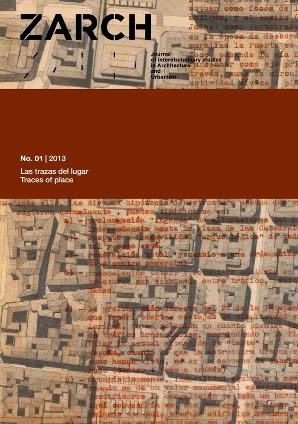Las ciudades genéricas chinas y sus futuros urbanos
DOI:
https://doi.org/10.26754/ojs_zarch/zarch.201319358Palabras clave:
China, ciudades genéricas, crecimiento urbano, identidad cultural, gran escalaResumen
A pesar del hecho de que el crecimiento urbano de China ha sido ampliamente estudiado y discutido durante décadas, este texto pretende ofrecer una visión más específica y reciente de la situación actual. Desde las experiencias arquitectónicas de Hong Kong y Mainland, estando completamente involucrados en los casos que vamos a describir a continuación e intentando evitar generalizaciones, nuestra intención es redefinir una realidad reiterada y las implicaciones que puede acarrear en un futuro cercano, teniendo en cuenta dos peligros fundamentales: 1. Las nuevas ciudades se convierten en genéricas sin un adecuado proceso de asimilación que tenga en cuenta el lugar y la identidad cultural; 2. La construcción de un desarrollo a gran escala pierde adaptabilidad para asumir cambios en programas desde hace tiempo obsoletos.
Descargas
Referencias
BALDEWEG, Juan Navarro, Caja de resonancia, Ed. Pre-textos, 2007
BERGER, Alan; CRAWFORD, Margaret (editors). pg 67-69. Nansha Coastal City-Landscape and Urbanism in the Pearl River Delta. Harvard University Graduate School of Design, Cambridge, 2006
Chinese Art and Architecture: An Annotated List of Recent Works in Western Languages (Smithsonian Institution, Washington, DC, USA) (http://www.si.edu/resource/faq/freersac/chinaart.htm)
CHRISTOU, Philip. 2003, El placer de lo inesperado (comentando el Interaction Center de Cedric Price), in Oeste 16, Espacio Activado, Colegio Oficial de Arquitectos de Extremadura
CRAWFORD, Margaret. Everyday Urbanism: Margaret Crawford vs. Michael Speaks. Edited by Rahul Mehrotra,1948
December 2, 2011. http://www.reuters.com/article/2011/12/02/us-china-property-bubbleidUSTRE7B10XA20111202
http://www.wired.com/wired/archive/8.06/koolhaas_pr.html
ITO, Toyo. Arquitectura de Límites Difusos, Ediciones Mínima, Ed. Gustavo Gili
JACOBS, Jane. The death and life of great American cities, 1961
June, 13, 2013. http://www.bloomberg.com/news/2013-06-14/pritzker-winningarchitect-buckchina-s-megacity-trend.html
KOOLHAAS, Rem, La Ciudad Genérica, Ediciones Mínima, Ed. Gustavo Gili
KOOLHAAS, Rem, DELIRIOUS New York, Ediciones Mínima, Ed. Gustavo Gili
KOOLHAAS, Rem; BOERI, Stefano; KWINTER, Sanford; TAZI,Nadia; OBRIST, Hans Ulrich. Mutations: Harvard Project on the City. Actar, Barcelona, 2001
KRIEGER, Alex; SAUNDERS, William S., eds. Minneapolis: University of Minnesota Press, 2009
LIN, Zhongjie. Kenzo Tange and the Metabolist Movement: urban utopias of modern Japan. Routledge, NY, 2010
LYNCH, Kevin. Good City Form pg. 99-100. “Chapter 5 –But is a General Normative Theory Possible?” MIT Press, Cambridge, 1981
March 20, 2011. http://www.sbs.com.au/dateline/story/about/id/601007/n/China-s- Ghost-Cities
March 20, 2011. http://www.sbs.com.au/dateline/story/about/id/601007/n/China-s- Ghost-Cities
MATHEWS, Stanley, 2007, From Agit Prop to Freespace. The Architecture of Cedric Price, Black Dog Publishing, Londres
PRICE, Cedric, RE: CP, Editorial Birkhaüser
SIU YU LAU, Stephen. Density, urban form & sustainable environment
SIU YU LAU, Stephen, Megacities NOW (Network of the World) – Where the Future is now
SORKIN, Michael. —The End(s) of Urban Design, pp. 155-182 in Harvard Design Magazine 25 (Fall 2006/Winter 2007), p. 18





